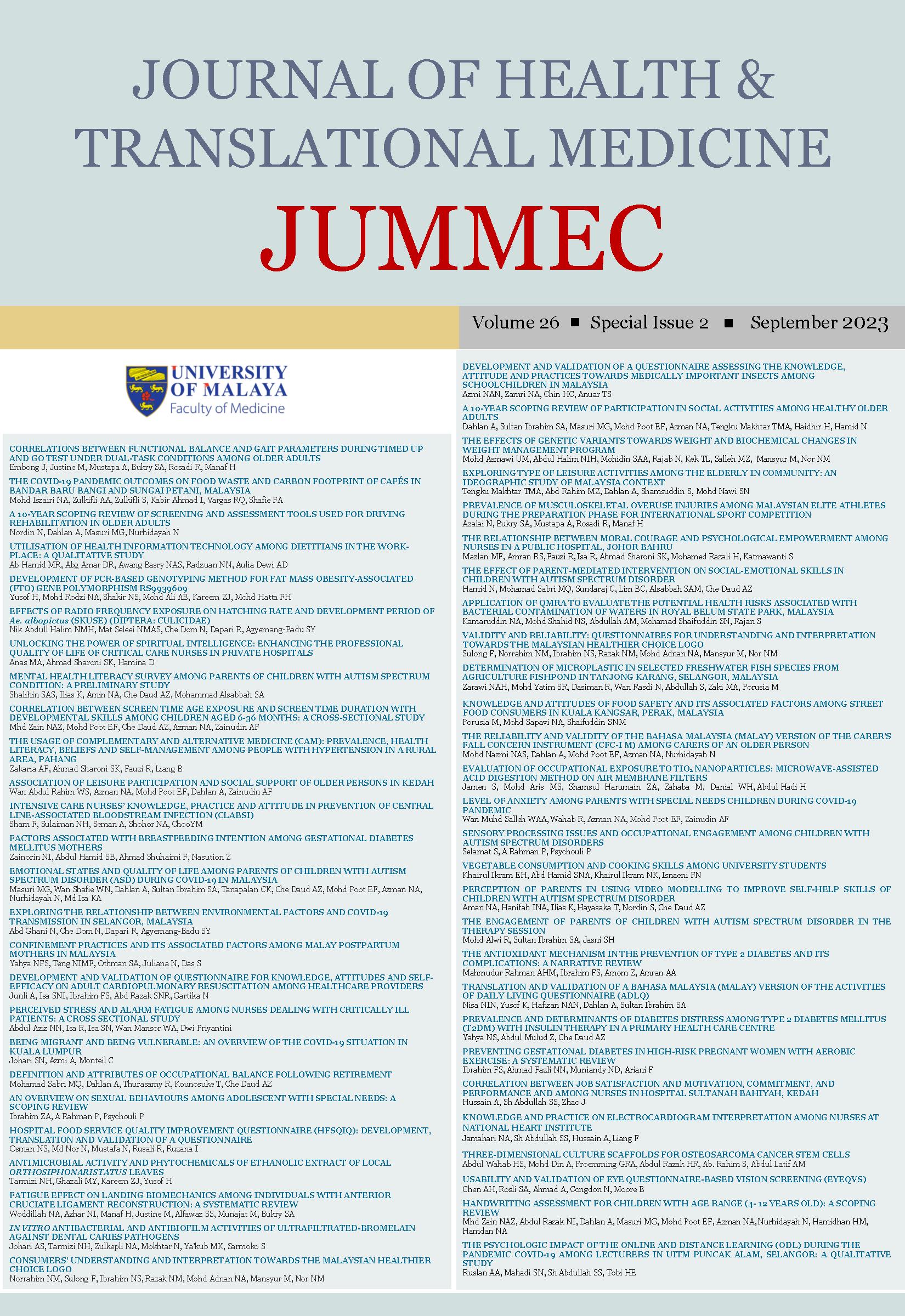USABILITY AND VALIDATION OF EYE QUESTIONNAIREBASED VISION SCREENING (EYEQVS)
Received 2023-07-07; Accepted 2023-09-22; Published 2023-09-22
DOI:
https://doi.org/10.22452/jummec.sp2023no2.52Keywords:
usability, validity, vision screening, questionnaire, underprivileged communityAbstract
Eye: Questionnaire-based Vision Screening (EyeQVS) is a 21-item questionnaire designed to screen for reduced vision, visual field defects, binocular disorders, dry eye, postural ergonomic problems and computer vision syndrome. EyeQVS offer an online and equipment-free vision screening option. The purpose of this research is evaluating both usability and validity of EyeQVS. The testability was surveyed using grading scales and the experience was investigated using structured and open-ended questions. Each target ocular condition of EyeQVS was compared to the full eye examination. Method: In the usability investigation of EyeQVS, two modes were employed [selfadministration (fifty-two self-respondents cum patients) and proxy-administration (ten proxy-respondents for sixty-two patients) modes] in screening for vision problems. In the validation investigation, fifty-two subjects were recruited using convenient sampling to check the accuracy of EyeQVS. Each subject was screened with EyeQVS before undergoing a comprehensive eye examination. Results: All respondents indicated high confidence towards EyeQVS with an average of more than 8 points on the Likert scale score. The majority found it easy to use and navigate. Respondents also adored the short duration required to complete the vision screening. The Chi-square of the Independence Test revealed that the designated components of EyeQVS had a good relationship with respective clinical tests (p < 0.05). Conclusion: EyeQVS exhibits workable user satisfaction and operative validation from the full eye examination findings. EyeQVS provides alternative online easy access to preventive eye care. EyeQVS is pragmatic for vision screening implementation in locations where equipment-based screening is not feasible. It is also suitable for vulnerable communities needing special care, support or protection because of age, disability, poverty or accessibility issues.
Downloads
Downloads
Published
Issue
Section
License
All authors agree that the article, if editorially accepted for publication, shall be licensed under the Creative Commons Attribution License 4.0 to allow others to freely access, copy and use research provided the author is correctly attributed, unless otherwise stated. All articles are available online without charge or other barriers to access. However, anyone wishing to reproduce large quantities of an article (250+) should inform the publisher. Any opinion expressed in the articles are those of the authors and do not reflect that of the University of Malaya, 50603 Kuala Lumpur, Malaysia.


